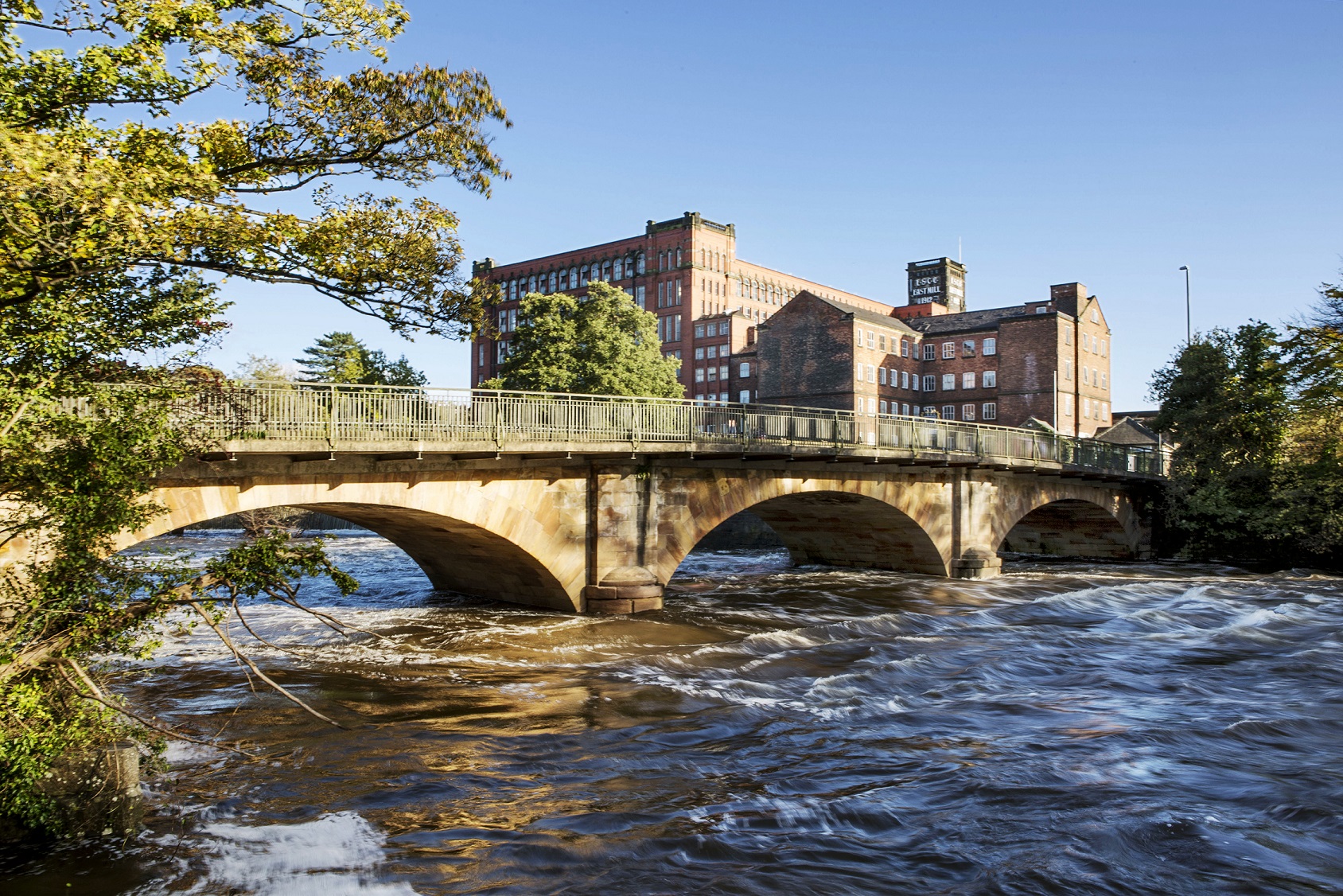Belper Mills

Belper Mills
The Belper Mills complex lies at the northern entrance to the town on the A6. Jedediah Strutt and his sons, William, George Benson and Joseph, developed the mills from the last quarter of the 18th century until it was the world’s largest mill complex under single ownership. Sadly, many of these buildings were lost through demolition in the early 1960s.
What makes them special?
- The oldest surviving mill on the site is The North Mill, one of the world’s first fireproof buildings. William Strutt used cast iron instead of timber for the internal structure.
- This innovative use of cast iron marked a major step in the use of metal in building construction, which eventually led to the modern-day skyscraper!
- It was in Belper that the world’s second water-powered cotton-spinning mill was built by Jedediah Strutt, following his work with Arkwright at Cromford.
What is there to see and do?
- An arched footbridge crosses over the road, linking the two sides of the former Belper Mills complex. This also served a defensive role and has gun embrasures positioned to protect the West Mill counting house.
- The impressive horseshoe weir was built to create a head of water to power the West Mill.
- Buy a copy of the Town Trail and set out on a walk to discover Belper’s 18th and 19th century townscapes.
Address: Bridgefoot, Belper, Derbyshire, DE56 1YD
Travel & Amenities
The bus station is a short walk away in Belper. See Getting There.
The Belper railway station is a short walk away. See Getting there.
There is some parking available at Strutt’s North Mill for visitors, and pay and display parking at Belper River Gardens.
Take a walk along Wyver Lane and you’ll be able to follow the Derwent Valley Heritage Way to Ambergate (about 2.5 miles) and on to Cromford (a further 5 miles).
Accommodation of all types can be booked through Visit Peak District and Derbyshire or Visit Amber Valley. www.visitpeakdistrict.com or www.visitambervalley.com

